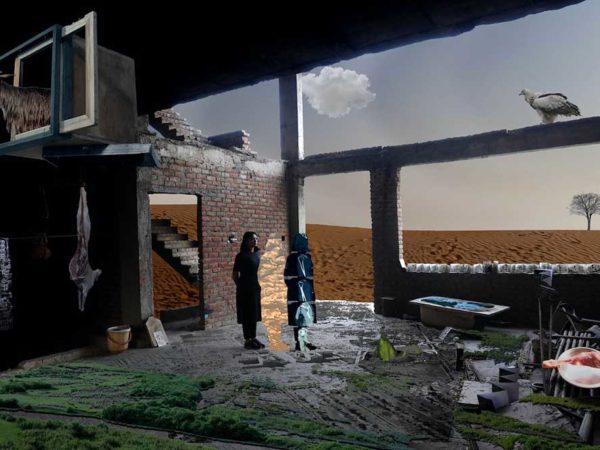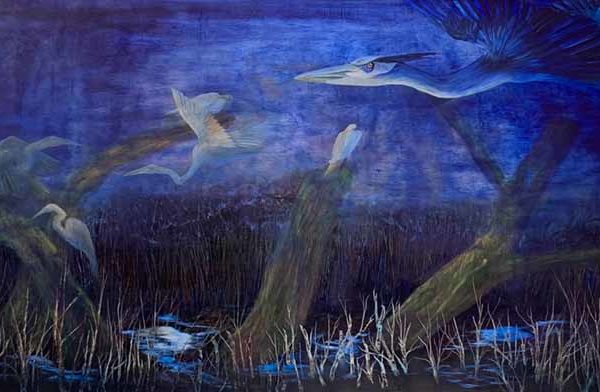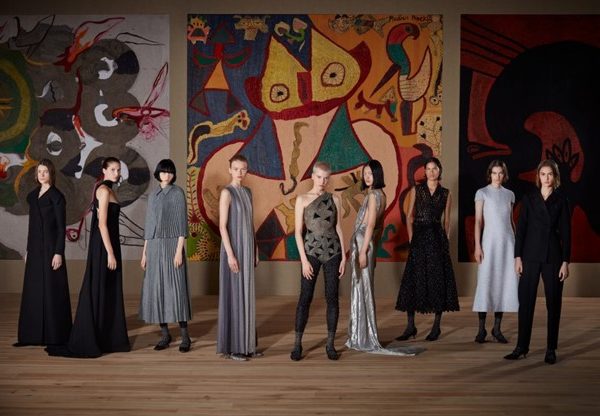With its festivals, rituals, and practises deeply ingrained in its cultural heritage, India as a country has a lot to offer. Kerala, one of the 28 states situated in the southernmost part of the country, endowed culturally and stands out for its high standards in literacy, the back-waters, as well as the irresistible Malabar cuisine. Among its many facets, the liturgical rituals of Kerala, including many performative traditions, have been practised for centuries and remain a vital aspect of its culture. Kalamezhuthu is one such traditional art form of Kerala that combines painting, music, and performance. This art form involves drawing intricate and detailed pictures of select gods and goddesses on the floor using natural pigments and powders, almost identical to its North Indian counterpart Rangoli. However, what makes it stand apart from Rangoli is its direct use in religious ceremonies.
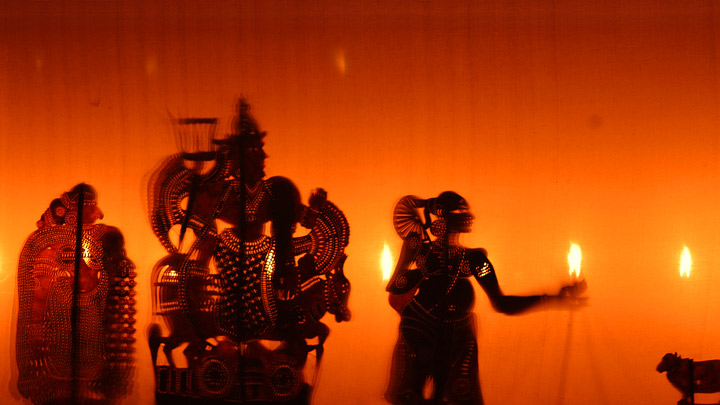
The exact origins of Kalamezhuthur are obscure, but it is believed to have originated in the ancient Tamil country, Tamilakam, which included parts of present-day Kerala, Tamil Nadu, and Sri Lanka. According to some historians, Kalamezhuthu can be traced back as early as the 9th century AD, when it was practised by the famed Chola dynasty (10th-13th centuries) in Tamil Nadu. However, others suggest that the art form is much older and may have originated during the classic Sangam period (3rd century BC to 3rd century AD). Derived from the two words “Kalam” and “ezhuthu”, the term Kalamezhuthu has been interpreted in numerous ways, but the most accepted understanding are the “kalam” meaning picture or drawing, and “ezhuthu” meaning to draw or write. The art form was traditionally practised by the Ambalavasis, a community of temple priests and artists, who were responsible for performing various rituals and ceremonies in the temples of Kerala.
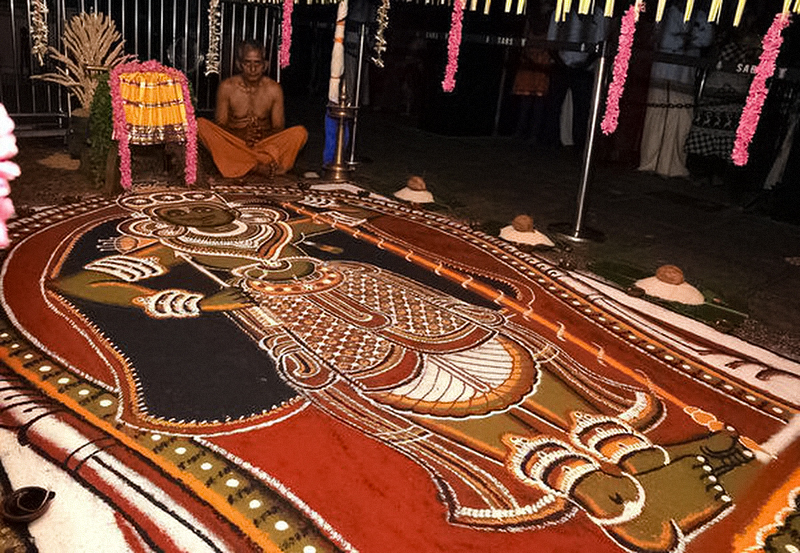
The art of Kalamezhuthu has several regional variations, each with its own unique style and tradition. In the northern parts of Kerala, the art form is known as ‘Kalam Pattu’, while in the southern parts it is called ‘Kalamezhuthu Pattu’. The art form is also known by different names in different regions, such as ‘Dhumakkali’ in Thrissur and ‘Kalam Karuppai’ in Tamil Nadu.
The process of creating a Kalamezhuthu painting is complex and time-consuming and it requires great skill and precision. The artist begins by preparing the floor with a mixture of cow dung and rice powder to create a smooth and even base for the painting. The artist then sketches the outline of the image using charcoal or chalk. Once the outline is complete, the artist begins filling in the colours using natural pigments and powders.. Natural pigments, derived from plants and minerals, are then mixed with water and applied using bamboo brushes. Thinking of the colour scheme, green is made of a particular leaf dried and powdered, white made of rice powder, black made of roasted and powdered paddy husk, yellow made of turmeric powder and red made up of powdered turmeric, lime and rice powder. The colours are then mixed with water to create a paste-like consistency, which is then applied to the floor using a brush made of coconut fibre.
The pancha bhootha (Prithvi, Aapam, Theijes, Vaayu, Aakasam) are represented by five colours: yellow for earth (Bhoomi), white for water (liquid or Aapam), red for fire (Theijes), green for air (Vaayu), and black for space (Aakasam). Among these, three colours hold significant importance as they represent the three fundamental properties of nature (Guna): Sattva, Rajas, and Tamas. White signifies Sattva or harmony and purity, red represents Rajas or the mode of distraction and externalisation, and black symbolises Tamas, the mode of negativity and dullness. The final result is a stunning and intricate painting that is used as a focal point for worship and prayer. The paintings are typically created on a large scale, sometimes measuring up to 20 feet in diameter. The designs typically feature mythological figures, gods and goddesses, and scenes from Hindu epics
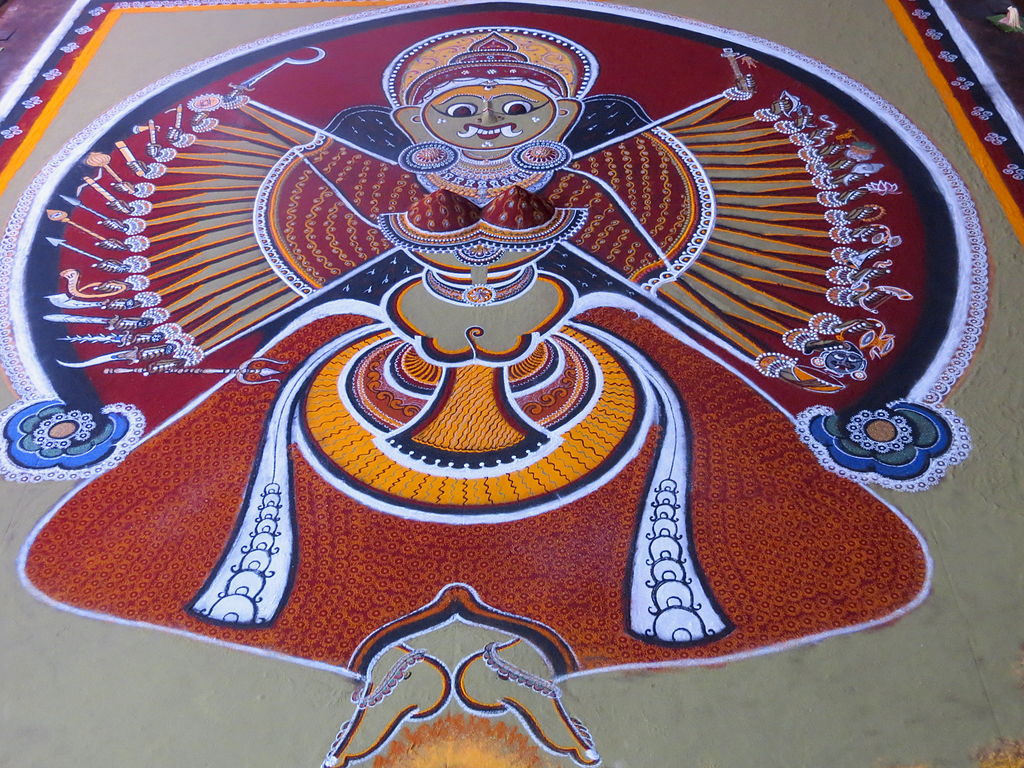
Kalamezhuthu is a broad term that refers to various types of this art form across Kerala with regional variations. These variations can be seen in the content, execution, scale, duration, and purpose of the performances. In some cases, it is performed as a part of another ritual, such as Mudiyettu in southern Kerala. The most common deities depicted in Kalamezhuthu are Bhadrakali, Vettakkorumakan, Ayyappan, and serpent gods among others. However, the Kalamezhuthu Pattu dedicated to Lord Vettakkorumakan is different from others because of the image and mythology associated with the deity. It is an example of classic Kalamezhuthu in Kerala.
Kalamezhuthu is a communal art form that is mainly performed by male artists, usually a group, known as ‘kalari’ or ‘kalariyogam’. The artists perform in a trance-like state, invoking the blessings of the deity through the patterns and designs they create. During the performance, musicians play traditional instruments such as the chenda, maddalam, and elathalam and chants, which add to the spiritual atmosphere of the ritual while the artist completes the painting. The designs created during Kalamezhuthu are temporary and are usually destroyed after the performance. This symbolises the impermanence of life and the need to focus on spiritual pursuits rather than material possessions.

In conclusion, Kalamezhuthu is a unique and significant art form that reflects the rich cultural heritage of Kerala. It represents a unique and valuable aspect of the region’s history, spiritual, and cultural significance and serves as an important source of community building, religious devotion, and artistic expression While the art form is facing several challenges in the contemporary world and requires sustained efforts to promote and preserve it for future generations, it is crucial to note that the amalgamation of performance and artistic exuberance reveals how body becomes a key medium to ‘perform’ and ‘make’ this art form.
Text by Masoom Pincha
Image Courtesy: Wikimedia Commons
Find out more about Kalamezhuthu:
http://drtps-kerala-art-forms.blogspot.com/2009/
https://www.keralatourism.org/artforms/kalamezhuthu-ritual-art/11
https://www.sahapedia.org/kalamezhuthu-pattu-of-kerala
https://www.caleidoscope.in/art-culture/the-kalamezhuthu-pattu-art

